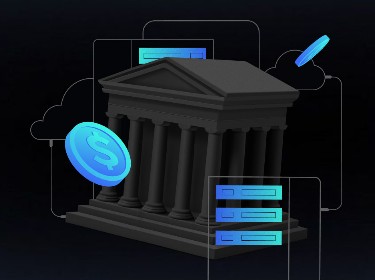While chaos may initially appear a bit scary, it often holds the potential for valuable discoveries. Similarly, when effectively organized and harnessed, unstructured data has the potential to generate tangible business outcomes.
As practice shows, 80-90% of the data generated by companies is unstructured. A survey conducted in the US and the UK showed that documents are the most common type of unstructured information in organizations, with 65.4% of respondents saying so. Other kinds include data from users, research, video, media, and design.
At the same time, the global volume of data is experiencing exponential growth. Projections indicate that by 2025, it will exceed an astonishing 180 zettabytes. However, collecting and analyzing unstructured data is quite difficult. So, despite this vast and ever-expanding sea of information, many companies tend to overlook unstructured data management.
Nevertheless, organizations that choose to embrace the challenge and deal with unstructured data have the opportunity to uncover a plethora of valuable insights.
Read this article to learn more about what unstructured data management entails, the challenges it presents, and the tools that help businesses effectively extract useful information.
What is unstructured data management?
Unstructured data management is the process of organizing, analyzing, and interpreting unstructured data within an organization.
Unlike structured data organized in consistent formats like spreadsheets with rows and columns, unstructured data comes in random and diverse forms, such as texts, emails, pictures, videos, social media posts, and sensor data. This is what makes it challenging to extract meaningful insights without specialized tools and techniques.
Check out our portfolio of applications where we seamlessly integrated advanced data analytics methodologies
This article is part of our larger series dedicated to Data governance. To explore this topic in greater detail, here’s the list of articles we recommend:
An In-Depth Guide to the 15 Best Data Governance Practices and Principles for Your Business
Data Governance Framework: Components, Advantages, and Development Strategies
How to Create Effective Data Governance Strategy: A Step-By-Step Guide
Structured vs. unstructured data: what’s the difference?
In the realm of data management, it is essential to distinguish between structured and unstructured data. Take a look at the following table to gain a clear idea of their differences.
![]()
What are unstructured data applications?
Businesses across industries can leverage unstructured data in various ways. Some examples include the implementation of enterprise data lakes, candidate search and match systems, cybersecurity measures, financial risk management strategies, and customer experience optimization.
Let’s take a closer look at them to see how exactly organizations can extract valuable insights, make informed decisions, and maintain a competitive edge in today’s data-driven world through effective unstructured data management.
Enterprise data lakes
Enterprise data lakes rely heavily on unstructured data as they serve as centralized repositories for storing vast volumes of raw information. The ability to store and analyze unstructured data within a data lake provides organizations with the flexibility to explore new data sources, uncover hidden relationships, and derive actionable insights that may have otherwise remained undiscovered.
Candidate search and match
Unstructured data management can greatly help you with candidate search for your company. With the application of natural language processing (NLP) and machine learning techniques, you can conveniently analyze resumes, job descriptions, and other unstructured data sources. Automating the process of matching job requirements with candidate profiles enables you to streamline recruitment, enhance efficiency, and elevate the quality of hires.
Cybersecurity measures
Unstructured data management tools are capable of detecting and mitigating cybersecurity threats. By analyzing social media feeds, email content, endpoint data, network traffic, as well as log data from various sources including network devices and servers, organizations can identify anomalies, patterns, and potential security breaches.
Learn more about potential cybersecurity threats that businesses need to be aware of
Financial risk management
Financial institutions can utilize unstructured data for risk management. In this domain, unstructured data may include financial reports, research documents, customer correspondence, social media posts, email communications, news articles, regulatory filings, and call recordings. Companies can analyze them to identify market trends, evaluate investment opportunities, optimize their portfolios, and assess and mitigate financial risks.
Market research and user experience optimization
By analyzing and interpreting data from various sources such as surveys, social media conversations, and online reviews, businesses can gain insights into customer preferences, opinions, and sentiments.
This information, combined with research and development efforts, enables organizations to better understand their target audience, identify emerging trends, and make data-driven decisions. This way, it will be easier to meet customer expectations and, consequently, enhance their satisfaction and drive business growth.
Why should businesses manage unstructured data?
![]()
Businesses that know how to effectively manage unstructured data can experience faster decision-making, increased productivity, strengthened regulatory compliance, quicker issue resolution, and a deeper understanding of the market. Let’s delve into the details.
Faster and better decision-making
Good management of unstructured data enables companies to derive valuable insights and patterns from diverse sources of information. This gives businesses deep understanding of their own data and trends and empowers decision-makers to make informed choices swiftly, reducing the time spent on data gathering and analysis.
Boosted productivity
Unstructured data management helps improve productivity and optimize business performance in several ways. First, by organizing and centralizing unstructured data, employees can quickly access the information they need, saving time and minimizing search efforts. Second, businesses can discover valuable patterns, trends, and correlations in their production and performance, allowing them to draw conclusions and optimize processes accordingly.
Strengthened regulatory compliance
By efficiently organizing and classifying unstructured data, businesses can easily identify sensitive information, apply appropriate security measures, and comply with data protection regulations. In addition, implementing data management practices such as data retention policies and audit trails enables companies to demonstrate compliance, monitor data usage, and respond to regulatory requests more effectively.
Quicker issue resolution
Unstructured data management enables companies to swiftly identify a range of issues, including security breaches and performance-related problems, that require immediate attention. This way, businesses can quickly detect these issues and take prompt action to resolve them.
A better understanding of the market
Analyzing unstructured data such as social media conversations, customer feedback, and market trends helps companies uncover patterns, emerging customer preferences, and competitor strategies. This comprehensive understanding of the market allows companies to adjust their marketing, identify untapped opportunities, and stay ahead of the competition.
Get a comprehensive overview of your business data with the help of our data visualization services
Main challenges of managing unstructured data
When it comes to managing unstructured data, businesses face a range of challenges that can prevent them from extracting valuable insights and capitalizing on their potential. These challenges include information silos, raw and noisy data, and the ever-growing volume of unstructured data.
Siloed information
Unstructured data is often stored and managed across different systems and departments, making it difficult to integrate and analyze. As a result, valuable information may remain inaccessible or overlooked, hindering innovation and improvement in business processes.
To address this issue, companies are increasingly implementing data analytics solutions and data integration tools that enable them to break down data silos, harmonize disparate data sources, and unleash the full potential of their information assets.
Here is how to uncover powerful business insights using the Tableau data analytics tool
Raw, noisy, and irrelevant data
It is true that unstructured data comes in raw, noisy, and irrelevant formats, requiring extensive preprocessing and filtering efforts to derive actionable information.
In order to extract meaningful insights from this type of data, organizations often employ techniques such as natural language processing, text mining, and other ML solutions. With reliable machine learning consulting, these techniques are capable of transforming the disorganized data into structured formats and uncover valuable outcomes and insights.
Ever-growing volumes of data
Unstructured data is multiplying at an astonishing rate, and it’s no surprise that many companies struggle to find ways to deal with it, let alone capitalize on its potential.
However, despite this tough challenge, organizations seeking to succeed in the digital age are highly interested in finding solutions that will enable them to manage and leverage the vast opportunities presented by unstructured data.
ML and AI solutions, such as NLP and computer vision, data lakes, and NoSQL databases can come to the rescue in this situation. They offer scalable solutions for managing large volumes of unstructured data.
What are the ways businesses can manage unstructured data effectively?
![]()
Ways of managing unstructured data include natural language processing, sentiment analysis, image/audio recognition and analysis, text mining, and data normalization and categorization. Let’s take a closer look at each of these methods.
Natural language processing
NLP uses computational techniques to understand and analyze human language, which helps process vast amounts of unstructured human-generated text data like social media posts, medical records, legal documents, news articles and publications, as well as emails and customer support transcripts.
This technology applies methods such as text parsing, part-of-speech tagging, and semantic analysis to extract meaning, relationships, and insights from unstructured text.
Sentiment analysis
Sentiment analysis is all about understanding people’s attitudes. It helps determine the sentiment or emotional tone expressed in the text. Why is this important for businesses? It’s a powerful tool for creating marketing strategies and managing their online reputation.
Sentiment analysis uses NLP, ML, and text analytics to identify and extract subjective information from various sources like comments and reviews on websites or social media. By recognizing positive and negative opinions from customers online, businesses can promptly respond to feedback and make immediate improvements. This proactive approach leads to increased customer satisfaction and builds stronger brand loyalty.
Image/audio recognition and analysis
Businesses can use computer vision and audio processing techniques to extract valuable insights from images and audio recordings.
Companies can analyze product images, scanned documents, and customer-generated content. By comprehending visual content, businesses can gain insights into customer preferences and better target marketing campaigns.
When dealing with scanned docs, businesses can efficiently identify the document’s subject matter and analyze the information it contains, leading to faster and more accurate decision-making.
As for the conversion of speech into text, it enables businesses to conduct analysis of audio recordings, such as customer calls, interviews, or podcasts. This helps identify sentiment trends and improve customer service.
See how this platform, developed by PixelPlex, is capable of collecting and analyzing large amounts of data to verify NFT collectibles
Text mining
Text mining is about extracting useful information from unstructured textual data. It encompasses techniques such as information retrieval, text classification, named entity recognition, and topic modeling. By applying these methods, text mining is able to uncover hidden patterns, trends, and insights that are buried within heaps of unstructured text.
Data normalization and categorization
Data normalization is the process of transforming unstructured data into a consistent format by removing irrelevant characters, standardizing units, and normalizing text. Categorization, on the other hand, classifies unstructured data into predefined categories or groups. These processes make the data more structured and suitable for analysis, allowing for easier retrieval, organization, and comparison of information.
Most popular unstructured data management solutions
In today’s business and IT landscape, the analysis of unstructured data has become a well-recognized practice. As a result, there is a wide array of unstructured data management tools available for businesses to choose from. Let’s explore some of the prominent solutions.
- MongoDB. This leading NoSQL database uses a flexible document-based model, which enables seamless storage, retrieval, and analysis of unstructured data. It allows businesses to store and process large volumes of diverse data types, including text, images, videos, and more, without the need for predefined schemas. This flexibility simplifies data integration and enables organizations to adapt quickly to evolving data needs.
- Apache Hadoop. This widely adopted open-source distributed processing framework offers businesses a robust solution for analyzing and storing massive volumes of unstructured data across various clusters. Although Hadoop may require a steeper learning curve compared to alternative solutions, it presents unparalleled scalability and flexibility, allowing businesses to process vast inputs through straightforward programming models without strict formatting constraints.
- Azure Cognitive Services. This Microsoft Azure platform helps organizations efficiently extract valuable insights from unstructured data using natural language processing. It is capable of detecting anomalies, moderating content, enhancing search functionality, and processing speech. With Azure’s robust infrastructure, businesses gain access to scalable and efficient big data storage for managing arbitrarily large amounts of unstructured information.
- IBM Watson. Offering a wide array of capabilities, this all-inclusive collection of AI tools is perfectly equipped to handle the challenges of managing unstructured data. Its feature set includes natural language processing, sentiment analysis, and image recognition, making it a versatile solution for diverse data needs. The availability of prebuilt models and APIs simplifies the process of integrating AI capabilities into existing systems, ensuring a seamless and hassle-free implementation.
Tableau and Power BI are two most powerful data analytics platforms. Read on to find out about the differences between them
Conclusion
Unstructured data management is not a choice but a necessity for companies seeking to thrive in the digital era. Embracing this practice allows businesses to gain a deeper understanding of their operations, production, customer behavior, and market trends, leading to better decision-making and improved outcomes.
If you are a company looking to effectively manage and leverage your unstructured data, our big data development services can assist you in achieving your goals. We specialize in providing sophisticated yet user-friendly solutions that streamline data collection, organization, and analysis, empowering you to make data-driven decisions on the go. Our business intelligence company can also assist you with facilitating real-time decision-making and gaining actionable insights.
Contact us today to discover how we can help you unlock the power of your data and drive your business forward.




